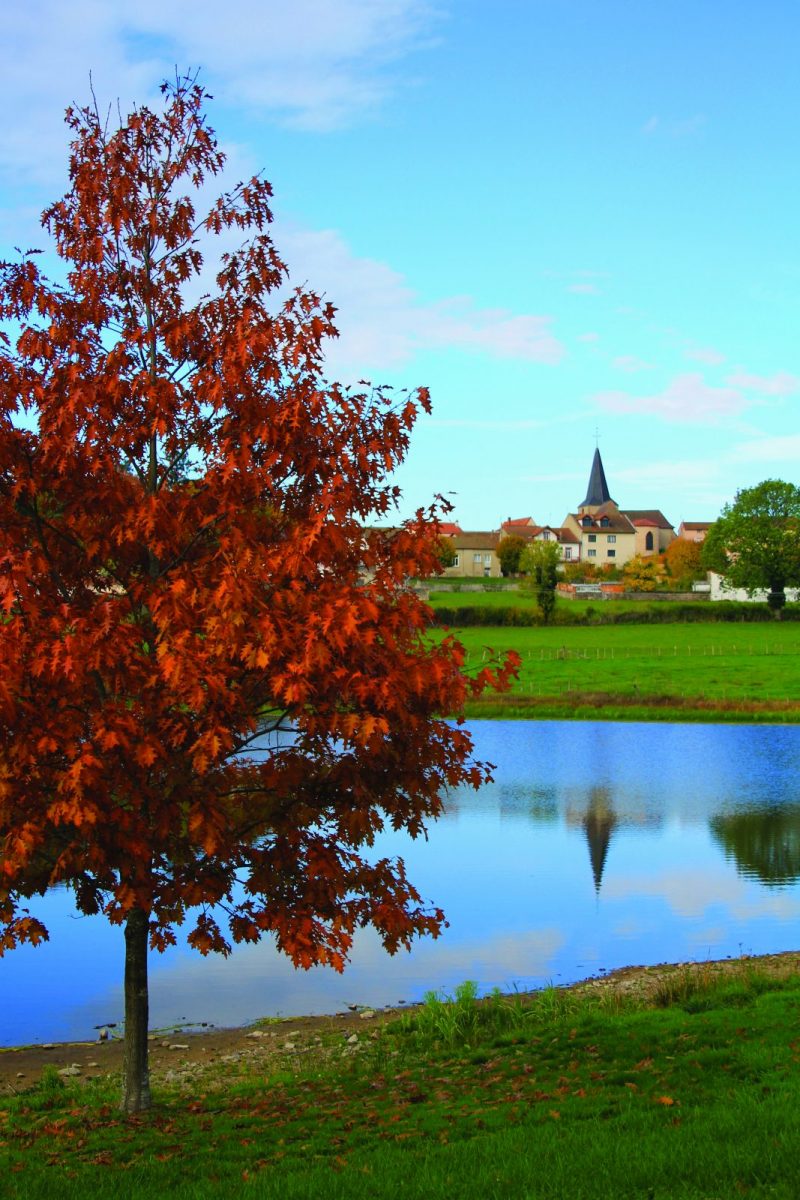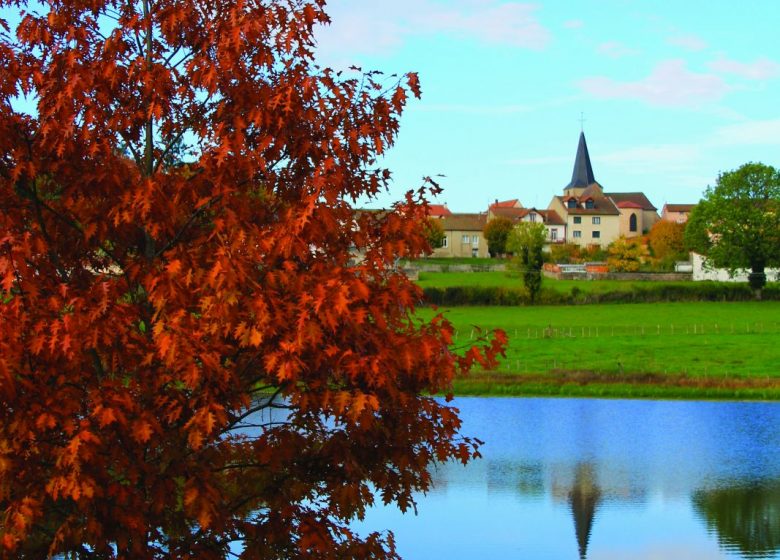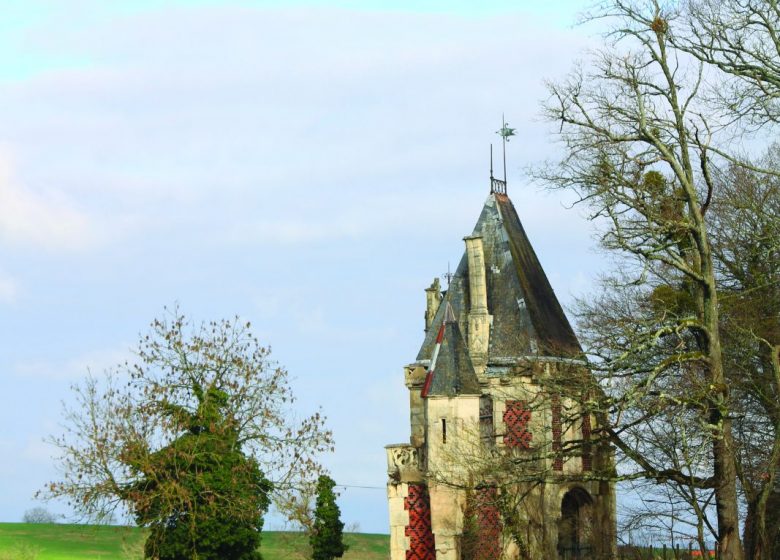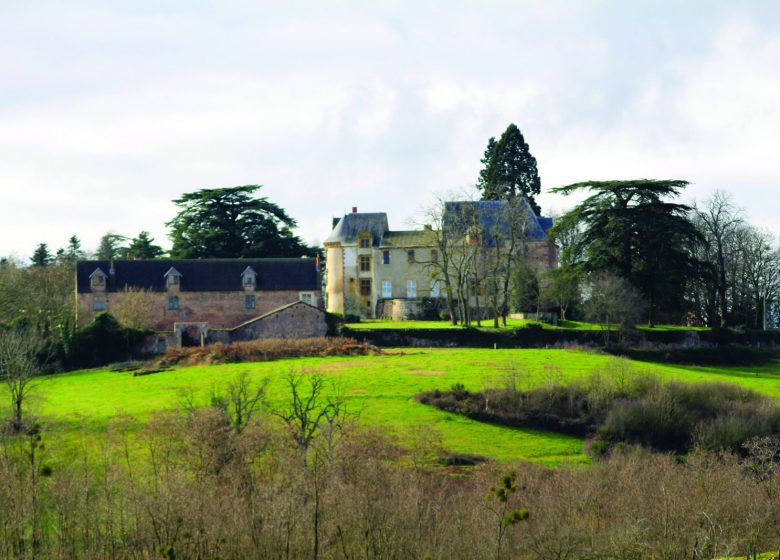All year, every day.
Private property cannot be visited.
Created before 1130 by the Sires of Beaujeu fighting against the Counts of Forez and classified as a historical monument since 1981, this castle is located on the D 52 road towards Montaiguët-en-Forez. From the road we will only see the concierge, allowing access to the park. You have to take the road to Sail-les-Bains to discover the massive rear of the building.
History
From the XNUMXth century to the Hundred Years War.
In 1190, by donation from Beaujeu, this house returned to the local lord, Eustache de Châtelus. This younger branch of the Châtelus, vassal of the Dukes of Bourbon, played a leading role in the fight against the English in the second part of the Hundred Years War, in particular with Duke Louis II.
In 1356, Hugues de Châteaumorand, lord banneret, was first baron of Bourbonnais. He was armed as a knight on the very morning of the battle of Poitiers, by the king, Jean le Bon. He finances with his own money the construction of the Cloître des Cordeliers de Charlieu, where his recumbent and that of his wife are currently located.
His son, Jean de Châteaumorand, was the great man of the family, friend of Duguesclin, warlord, diplomat and chronicler. He negotiated in 1396 the marriage of the daughter of Charles VI with the King of England, as well as the redemption of the captives of Nicopolis. In 1400, he was captain for the king of France of the city of Constantinople, besieged by Bajazet.
He left only one daughter, Agnette, married in 1424 to Brémond de Lévis.
The stained-glass window of the church of Saint-Martin represents them both.
La Renaissance
After the Hundred Years War, the wars in Italy began. Jean de Lévis-Châteaumorand made all the campaigns with François Ier who befriended him and made him, in 1532, governor of his youngest son, the Duke of Orleans, future Henri II.
Around 1520, conquered by the Quattrocento, he had the feudal fortress demolished to build a Renaissance castle.
His brother and heir, Antoine de Lévis, bishop of Saint-Flour, completed the work.
His heir was his niece, Gabrielle de Lévis-Charlus married to Antoine Le Long de Chenillac. They only had one daughter.
Diane de Châteaumorand (1558-1626), was famous for her beauty and her successive marriages with Anne d'Urfé, bailiff and governor of Forez, then Honoré d'Urfé, baron of Châteaumorand (1567-1625).
Honoré d'Urfé wrote in Châteaumorand the first two books of l'Astrée, a famous pastoral novel. Diane de Châteaumorand made her will in favor of her nephew, Jean-Claude de Lévis-Charlus, in charge of taking the name and the arms of Châteaumorand which he had erected as a marquisate.
From the XNUMXth century to the present day
After a mediocre period, at the beginning of the XNUMXth century, François-Charles de Lévis returned to the military glory of his ancestors.
Lieutenant-General of the King's armies, he took part in all of Louis XV's wars. To modernize Châteaumorand, he demolished from 1759, part of the Renaissance castle to replace it with a large Mansard facade.
One of his daughters married Gaston de Lévis-Leran, heir to the Marquisate of Mirepoix and the Marshalate of Faith. He succeeded his father-in-law as lieutenant-general of Bourbonnais, a brilliant marriage but which was harmful for Châteaumorand, abandoned in favor of Ariège, where the medieval town of Mirepoix is located. During the Revolution, the exactions of the revolutionary districts were severe.
The Restoration and the Empire were brilliant periods, which led the descendant of the Lévis, the Countess of Hamel to alienate Châteaumorand who had remained in her lineage for 680 years.
Châteaumorand was acquired in June 1877 by Mr. Sigisbert Maridet and has remained the family property since that date.
The current castle has retained behind its large Mansard facade elements of its successive transformations.
Opening
| From January 01 to December 31, 2024 | |
| Monday | Open |
| Tuesday | Open |
| Wednesday | Open |
| Thursday | Open |
| Friday | Open |
| Saturday | Open |
| Sunday | Open |
Private property cannot be visited
Prices
Free
Free.
Services
Services
- Pet Friendly










